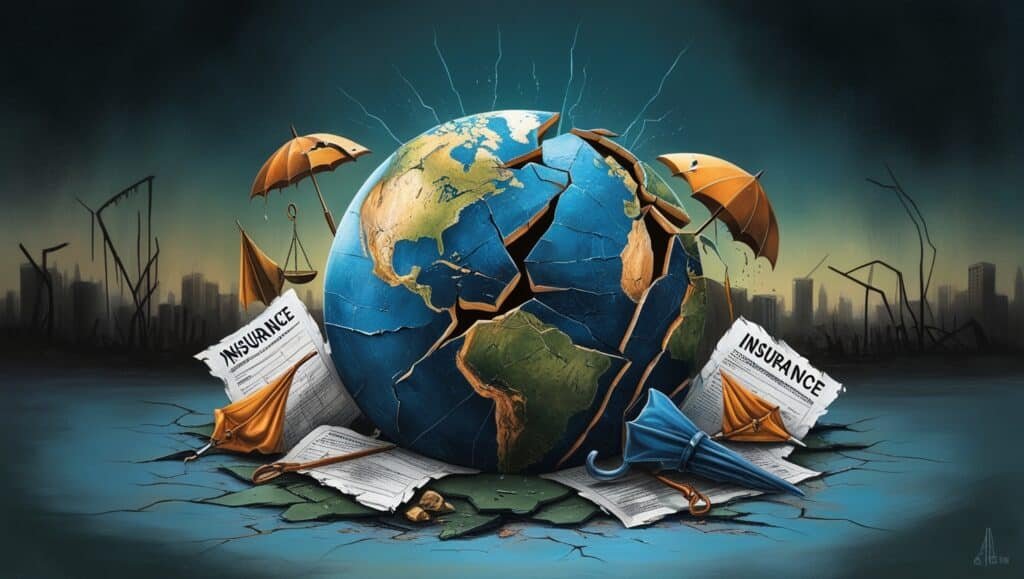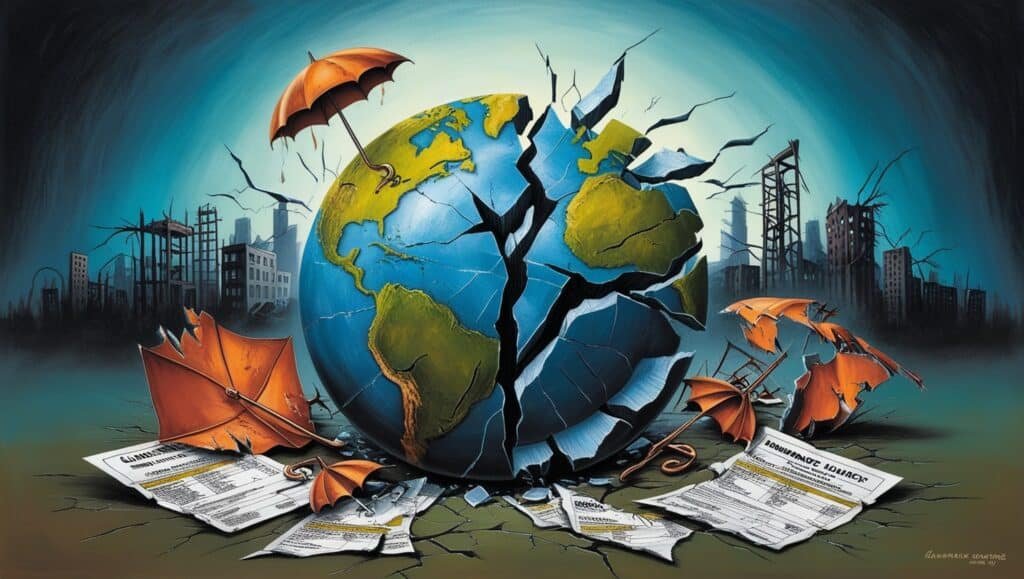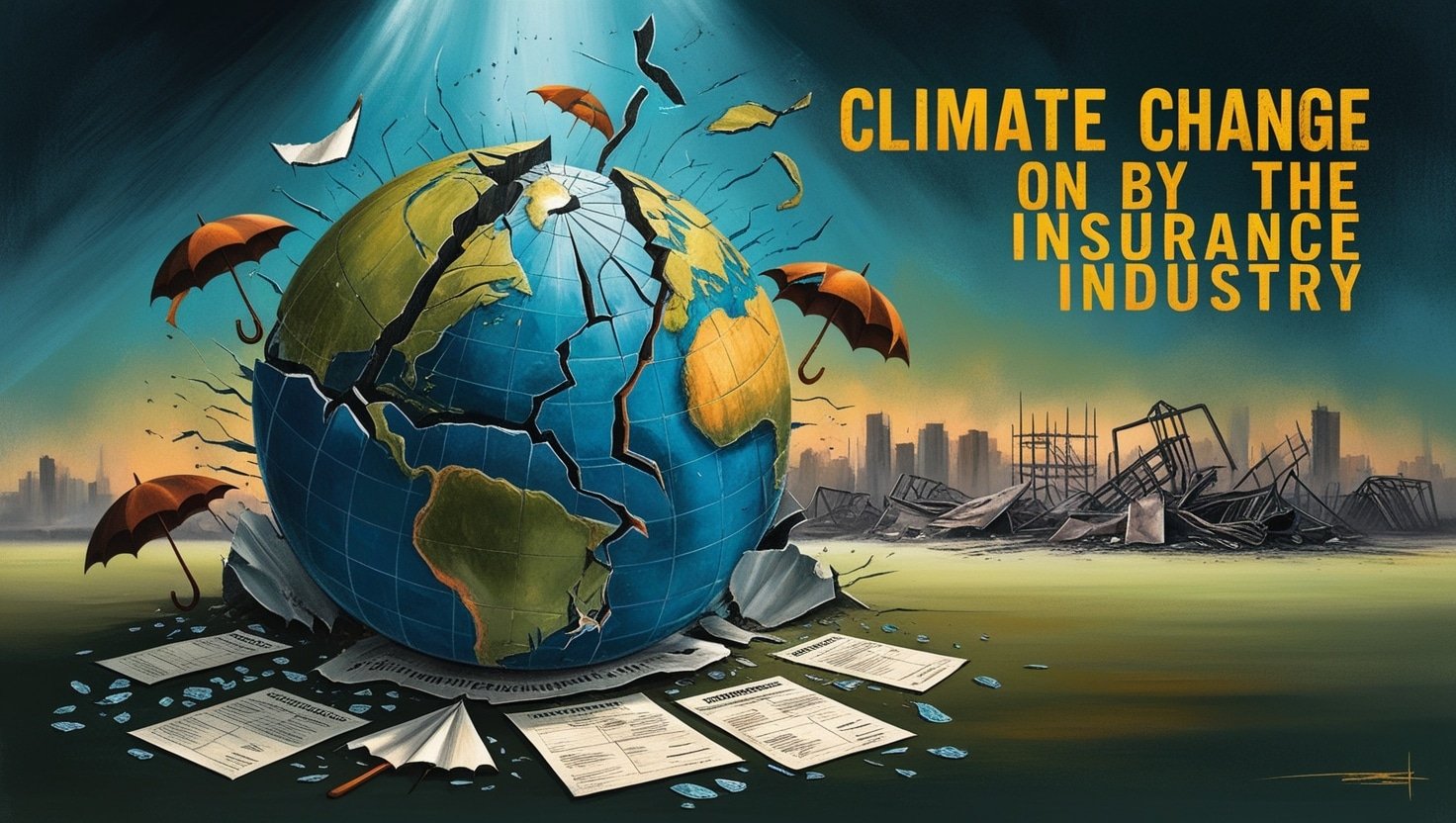The insurance industry is undergoing a transformation due to climate change, a phenomenon that has introduced complex risks and unprecedented uncertainties. As a professional insurance agent, I’ve seen firsthand how these shifts demand innovative approaches to risk assessment, pricing, and policy design. In this article, I’ll explain how climate change is reshaping insurance models, its effects on various insurance sectors, and what we, as industry professionals, can do to adapt.
Understanding the Connection Between Climate Change and Insurance
Climate change intensifies natural disasters like hurricanes, wildfires, and floods, directly affecting the insurance industry. According to the World Meteorological Organization, the frequency of extreme weather events has increased fivefold over the past 50 years. These events result in higher claims, which challenge the sustainability of traditional insurance models.
For instance, insurers are now incorporating advanced predictive analytics and climate science into their underwriting to assess risks more accurately. Companies like Swiss Re and Munich Re are investing heavily in climate risk modeling to ensure they remain competitive. You can read more about such initiatives on Swiss Re’s climate solutions page.
Rising Claims Due to Natural Disasters
The increasing cost of claims due to natural disasters is a critical issue. For example, U.S. wildfires in 2023 alone caused over $80 billion in insured losses. Floods, often underestimated in terms of risk, contribute significantly to rising claims.
Table: Impact of Major Natural Disasters on Insurance (2022-2023)
| Event | Location | Insured Losses (USD) | Key Risk Factor |
|---|---|---|---|
| Wildfires | California, USA | $85 billion | Drought and extreme heat |
| Hurricanes | Florida, USA | $78 billion | Increased storm intensity |
| Flooding | Pakistan | $40 billion | Excessive monsoon rainfall |
| Heatwaves | Europe | $12 billion | High temperatures and drought |
Source: Insurance Information Institute
Climate Change’s Effect on Property Insurance
One of the most affected sectors is property insurance. Extreme weather damages homes and infrastructure, leading to higher premiums and, in some cases, unavailability of coverage. States like California have seen major insurers withdrawing from wildfire-prone areas. My experience working with clients in these regions underscores the need for innovative solutions like community-based insurance pools.
For more information about regional insurance challenges, visit the California Department of Insurance.
The Role of Predictive Analytics in Addressing Climate Risks

To adapt, insurers are turning to technology. Predictive analytics, driven by artificial intelligence (AI), helps identify areas at high risk of climate-related events. These tools enable insurers to refine pricing models and offer more customized policies.
For instance, telematics in vehicles helps assess real-time driving behaviors, adjusting premiums accordingly. Similarly, smart home sensors predict risks like flooding or fires, helping insurers prevent losses before they occur. Learn how AI is transforming insurance at Insurance Journal.
Shift Toward Parametric Insurance Models
One emerging solution is parametric insurance, which pays out based on predefined triggers like wind speeds or rainfall levels. Unlike traditional models, parametric insurance offers faster claims processing and greater transparency. This approach is especially beneficial in disaster-prone regions where quick recovery is essential.
Explore more about parametric insurance on Munich Re’s website.
The Challenge of Climate Adaptation for Life and Health Insurance
While property and casualty insurance face visible impacts, life and health insurance also grapple with indirect consequences of climate change. Heatwaves and air pollution lead to increased respiratory and cardiovascular conditions, affecting mortality rates.
Insurers need to reassess actuarial models, considering these emerging health risks. For example, offering lower premiums for clients adopting sustainable lifestyles, such as using renewable energy at home, could incentivize climate-conscious behaviors.
Climate Change and Liability Insurance
Liability insurance is also feeling the heat from climate change. Companies face rising litigation risks for environmental damage and failing to mitigate climate impacts. For instance, energy companies and large corporations have been targeted for their role in carbon emissions. As an insurance agent, I’ve observed businesses now seeking expanded liability coverage to protect themselves from lawsuits related to environmental negligence.
For example, the case of Shell being sued for failing to align its strategy with global climate targets has set a precedent for corporate accountability. This trend emphasizes the need for liability insurers to incorporate climate risk evaluations into their policies. You can find more about corporate environmental liability trends on Reuters.
Renewable Energy Insurance: A Growing Segment
With governments and businesses accelerating the adoption of renewable energy, insuring wind farms, solar installations, and other green technologies has become a specialized area. While renewable energy mitigates climate change, it introduces unique risks, such as equipment damage from extreme weather or inefficiencies due to technological failures.
For instance, solar panel insurers face challenges like hail damage and heat stress. Innovative solutions include warranties that extend to energy output losses, ensuring financial stability for project owners. To explore best practices for renewable energy insurance, check out Allianz’s renewable energy page.
Table: Key Risks in Renewable Energy Insurance
| Type of Renewable Energy | Primary Risks | Insurance Solutions |
|---|---|---|
| Solar Power | Hail damage, overheating | Output loss insurance, weather coverage |
| Wind Energy | Blade damage, lightning | Component warranties, risk-sharing |
| Hydro Energy | Flooding, mechanical failure | Catastrophe coverage, repair insurance |
Opportunities in Agricultural Insurance
Climate change significantly impacts agriculture, with unpredictable weather leading to crop losses and livestock fatalities. Traditional agricultural insurance often fails to address these risks comprehensively. Innovative models, like weather-indexed insurance, are stepping in to fill the gap.
For example, farmers in drought-prone regions can benefit from policies that trigger payouts based on rainfall levels. This eliminates the need for field assessments and ensures quicker compensation. As someone who has worked closely with agricultural communities, I can attest to the growing interest in these solutions. Learn more about indexed insurance on World Bank’s site.
The Importance of Collaboration in Climate Insurance
Addressing climate risks requires collaboration among insurers, governments, and scientists. Public-private partnerships can help create resilient insurance systems. For example, the National Flood Insurance Program (NFIP) in the U.S. demonstrates how government-backed policies can stabilize markets and protect vulnerable communities.
Moreover, international initiatives like the Insurance Development Forum (IDF) promote data-sharing and risk assessment tools, enabling insurers to better understand and manage climate-related risks. You can explore the IDF’s work on their official website.
Personal Experience in Navigating Climate Risks
In my two decades as an insurance professional, I’ve witnessed the profound impact of climate change on our industry. One notable case involved a client whose business faced repeated flood damages due to rising sea levels. By working together, we customized a parametric insurance plan that offered quick payouts and incentives for adopting flood-resistant measures.
This experience underscored the importance of proactive risk management and education. Clients who understand their risks and adopt preventive measures not only save on premiums but also reduce the strain on insurers.

Strategies for Insurers to Adapt to Climate Change
To remain viable, insurers must embrace new strategies:
- Invest in Data Analytics
Leveraging big data and AI allows insurers to predict and model climate risks more effectively. For instance, predictive flood maps can guide underwriting decisions and minimize losses. - Promote Risk Mitigation Among Clients
Offering incentives for climate-friendly behaviors, such as using renewable energy or retrofitting buildings for resilience, can reduce claim frequencies. Programs like Energy Star-certified property discounts exemplify this approach. - Develop Resilient Investment Portfolios
Insurers must align their investments with sustainable goals. Divesting from fossil fuels and supporting renewable energy projects are steps in the right direction. - Collaborate Globally
Global frameworks, such as the United Nations’ Principles for Sustainable Insurance (PSI), provide guidelines for incorporating sustainability into business models. Participation in such initiatives enhances credibility and fosters innovation.
The Role of Technology in Climate-Responsive Insurance Models
Technology has become a cornerstone in addressing climate risks within insurance. Tools such as blockchain, artificial intelligence (AI), and Internet of Things (IoT) devices are transforming the landscape. For instance, IoT-enabled devices like water sensors can alert homeowners about leaks before they turn into major floods, reducing claims and encouraging proactive action.
Similarly, AI-powered tools analyze historical data alongside real-time climate projections to refine underwriting and pricing models. Blockchain adds transparency and efficiency, especially in parametric insurance, by automating claims payouts once predefined triggers are met. This technology helps insurers meet growing client demands for faster and more reliable service.
To explore further about blockchain’s impact on the industry, you can visit Deloitte’s insights.
Global Examples of Climate Change Impact on Insurance
Different regions face unique challenges due to climate change, requiring tailored insurance responses. For instance:
- Europe: Rising heatwaves have led to increased health insurance claims for heat-related illnesses. Insurers are developing specialized health plans to address such issues.
- Asia-Pacific: Coastal regions in countries like Bangladesh suffer significant economic losses due to flooding. Microinsurance models are gaining traction here, offering affordable coverage to vulnerable populations.
- United States: Hurricanes in states like Florida have driven up premiums, with some insurers refusing to provide coverage in high-risk areas. State-backed initiatives like Citizens Property Insurance offer alternatives for homeowners.
You can dive deeper into region-specific challenges at Climate Action.
Policy Recommendations for Climate Adaptation in Insurance
Policymakers and insurers need to collaborate to create sustainable solutions. Below are key recommendations:
- Introduce Climate-Linked Incentives: Governments can subsidize premiums for businesses and individuals adopting eco-friendly practices.
- Expand Access to Microinsurance: Affordable insurance policies should be made accessible to underserved communities, particularly in climate-vulnerable regions.
- Mandate Climate Risk Disclosures: Regulators can require insurers to disclose how they assess and mitigate climate risks, fostering greater transparency.
- Promote Resilience Investments: Insurers should work with clients to fund adaptive measures, such as flood barriers or heat-resistant materials, reducing future claims.
For an in-depth understanding of these policies, visit the OECD’s climate insurance page.
Future Trends in Climate-Responsive Insurance Models
The future of insurance will hinge on its ability to evolve with the changing climate. Innovations such as customizable policies, dynamic pricing models, and embedded insurance solutions are on the rise. For instance, smart contracts in blockchain can enable event-triggered claims that are settled without human intervention.
Moreover, insurers may increasingly engage in climate advocacy, pushing for stricter regulations to reduce emissions. These efforts align with broader industry goals of sustainability and resilience.
Final Thoughts from an Insurance Professional
As someone deeply rooted in the insurance industry, I believe climate change isn’t just a challenge—it’s an opportunity for growth and innovation. By embracing technology, fostering collaborations, and educating clients about climate risks, we can ensure the industry remains resilient and continues to protect communities worldwide.
For those navigating these challenges, remember that adaptation is the key to survival. Whether you’re an insurer, policymaker, or customer, staying informed and proactive is essential. If you’d like to explore practical tools or advice, feel free to connect with professionals or explore resources such as Insurance Information Institute.




